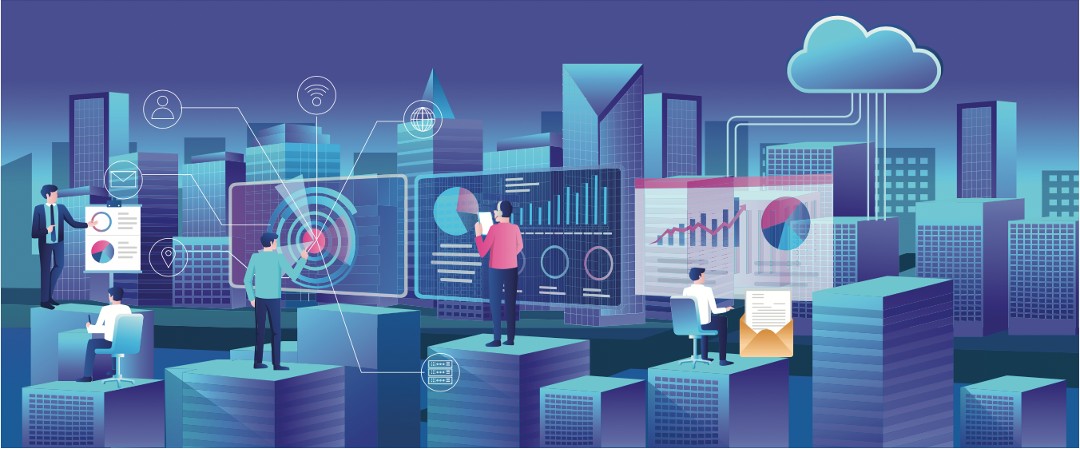The status quo is not always an option for businesses, even if the business does not need or wish to change. Often, the ecosystem forces change upon the business. Companies that do not change when their partners and customers change soon become obsolete. Since industry 4.0 started over a decade ago, business ecosystems have constantly turned digital. The COVID-19 pandemic sped up digital adoption and heralded a digital-first economy. Businesses that do not overhaul their systems and become digital-savvy will soon find themselves out of business. Here are seven digital transformation success stories that will inspire other companies. All businesses can emulate the core principles behind these transformation efforts.
1. IKEA
IKEA was until recently bogged down by its analogue business operations. The company had a complex, under-optimised supply chain and a hectic customer shopping experience.
The COVID-19 pandemic forced IKEA to shut down 75% of its stores for about seven weeks, leading to a revenue loss of $1.5 billion. But IKEA used the disruption to implement its long-pending digital transformation.
The company rolled out its digital-first strategy by shifting its purchase online at scale. Corresponding processes, including customer interactions, sales support, and guidance, moved online as well. The re-engineered supply chain has a customer-centric focus.
The key elements of IKEA’s transformation were:
- Data-driven decisions.
- Rolling out Augmented Reality (AR) and Virtual Reality (VR) capabilities to engage customers better. New AR/VR solutions allow users to visualise the furniture before purchase.
- Expanding the product line to launch smart home products.
These digital transformation efforts bore fruit. By June 2021, IKEA enjoyed a 300% increase in eCommerce sales.
2. Walmart
Walmart has been making considerable investments in technology over the last decade. In 2018, the company invested $11.7 billion in technology.
The company adopts a holistic approach to digitalisation. The transformation efforts focus on the core e-commerce platform, supply chain, and delivery. An Intelligent Retail Lab co-opts an Artificial Intelligence testing area, sensors, cameras and processors.
The key innovations in recent times include:
- Internal store apps that trigger automatic notifications on out-of-stock products, check-out counter lines, and shopping cart availability.
- Shelf scanning robots and electronic shelf labels. Often, wrong labelling leads to lost sales. Electronic shelf labels enable automatic and dynamic price changes. Manual efforts reduce, and efficiency improves.
- Virtual try-on for clothes and voice-centric apps.
- Blockchain initiatives. The company has collaborated with IBM to roll out blockchain. The technology automates transactions among suppliers, logistics, and carriers.
- Multiple check-out options, including cashier-less technology and mobile scan-and-go systems. Not all customers are ready to join the digital hoop. Many customers still enjoy visiting stores and shun digital as a matter of choice. In such cases, success depends on applying technology to make the store visit better. As such, most store check-outs combine cashier-less tech with traditional cashiers.
3. H&M
H&M focuses on bringing about a culture of courage and inculcating employees with an entrepreneurial spirit. The culture change makes the employees “dare to do new things, try something outside the box, and dare to fail.”
The key initiatives in the digital transformation journey included:
- Investing in technological tools to improve customer experience. Customers now have convenient digital-first shopping options. One of the earliest initiatives was mobile apps to enhance the buying experience. The Perfect Fit app allows customers to create digital selfie-based avatars or upload photos, to try on clothes.
- Material innovation and recycling. Some innovations in the recycling space include Loop, a garment-to-garment recycling machine, and Circulose, a new material from the cotton recovered from worn-out clothes.
- Sustainability initiatives. H&M has invested in digital tools to support sustainability. “Circulator,” an innovative design tool, changes the production process by understanding the customer first. The company also applies zero waste pattern cutting techniques.
- Embedding technology into products. On the anvil is Product ID that will make it easy for consumers to swap and share garments. The company has also tested voice-enabled apps and AR holograms.

4. Coca-Cola
Coca-Cola has invested heavily in digital transformation over the years. The latest transformation strategy strives to make its brand acceptable to a new generation of customers that do not distinguish between reality and augmented reality. The digital transformation roadmap addressed these cultural changes and also made operational tweaks. The initiatives allowed the company to speed up the time-to-market for new products from three months to two months or less.
Coca-Cola Bottlers’ Sales & Services (CCBSS) was an early adopter of automated document scanning and processing. Finding the systems in place unreliable for digital operations, the company revamped its document processing efforts. The company partnered with Ripcord for its robotics and ML software that processes documents flawlessly. The new technology:
- Removes staples
- Use Machine Learning to read scans
- Dispatches complete documents to customers with near-zero error rates.
5. Nike
Nike’s digital transformation efforts aim to make it a digital-first, direct-to-consumer (D2C) company. The transformation efforts take two broad approaches.
- Consumer Direct Offence (CDO) ended many longstanding sales partnerships and focused on direct sales to customers.
- Consumer Direct Acceleration (CDA) focuses on developing a premium and seamless brand experience wherever customers shop, be it digital, physical stores, or online-to-offline services.
The company made heavy investments in data and even recruited in-house data scientists and ML engineers. A host of customer-centric apps, such as the Nike app, Nike Training Club, and Nike Run Club apps, offer exclusive and customised access to Nike’s products and value-added services.
Nike also applies new technology to improve operational efficiency. Among the recent innovations:
- RFID tag chips embedded in products allow end-to-end tracking of inventory items.
- Flyknit, a digitally engineered knitting process, produces shoes with 60% less waste.
6. Under Armour
UnderArmour’s digital transformation effort focused on innovations that identify customer trends. The company leverages data to gain valuable first-mover advantages.
The ‘connected fitness’ platform tracks and analyses personal health data and sends it to the customers’ phones. The company leveraged the data to identify fitness and health trends. For instance, the company could identify a walking trend in Australia. The tracking app sends localised marketing communications before competitors know what is happening.
7. Budweiser
Budweiser’s transformation efforts upgrade processes using Artificial Intelligence. The company’s ‘Beer Garage’ is a dedicated innovation centre. The machines try out various permutations and combinations. Human employees only have to taste the products churned out by the machines.
The common thread running through these digital transformation success stories is customer focus. Successful companies introduce digital technologies to enhance customer experience and employee productivity.











